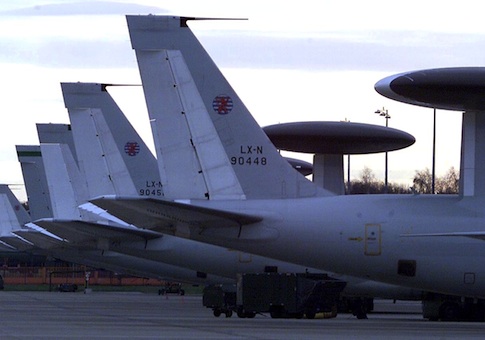A key fleet of U.S. reconnaissance planes used to detect enemy aircraft in hostile settings will to be cut by 25 percent under President Obama’s fiscal year 2015 budget, according to multiple sources familiar with the budget proposal.
A fleet of 31 AWACs, or Airborne Warning and Control System planes, will be reduced to 24 by 2015 under Obama’s budget proposal.
The situation has prompted concern in defense circles and elsewhere, where sources have pointed out that AWACS are currently deployed in Poland and Romania in order to help monitor the standoff in Ukraine.
AWACS are a highly advanced type of reconnaissance craft able to monitor enemy movements in the sky and ground from great distances. Each AWAC unit costs $270 million, according to the Air Force.
NATO dispatched several of its own AWACs on Monday to monitor Russian movement in Ukraine’s Crimea region, where a tense standoff is still taking place.
"All AWACs reconnaissance flights will take place solely over alliance territory," a NATO spokesman was quoted as saying by the BBC.
The seven U.S. AWAC planes cut in Obama’s budget would be completely scrapped if the proposal is adopted.
Twenty-seven of these AWAC planes are currently based in Tinker Air Force Base in Oklahoma, while two are deployed in Japan and another two in Alaska.
The planes act as a large radar system, making them ideal for monitoring movements in areas such as Ukraine, where early detection can provide the edge for response units.
The AWACs are capable of identifying enemy movements and aircraft, but also guiding response forces during a response.
Lawmakers could pressure the Air Force to fight the cuts. The Air Force, like every branch of the military, has seen its budgets significantly constrained in recent years.
The Pentagon is faced with massive spending cuts under the budget and is considering cutting some 420,000 Army soldiers due to the financial constraints.
